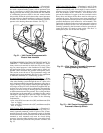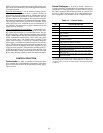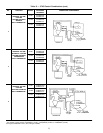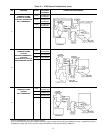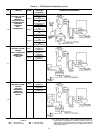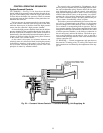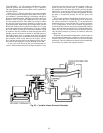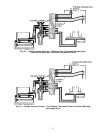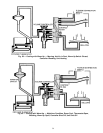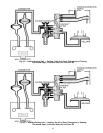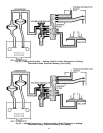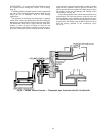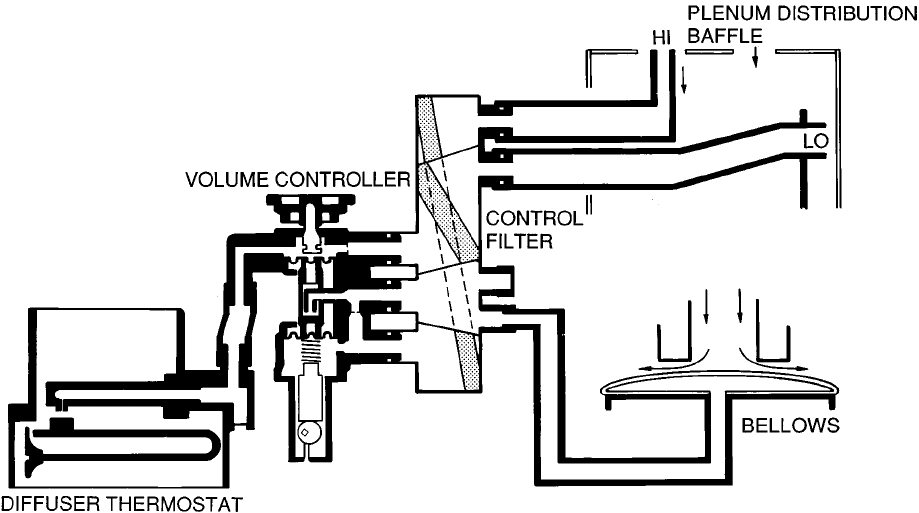
VAV COOLING — In VAV operation, the filter and volume
controller perform the same functions as in CV operation.
The unit-mounted thermostat modifies control operation as
described below.
Refer to Fig. 55. The air enters the low pressure chamber
of the volume controller through a fixed orifice.The low pres-
sure chamber is connected through a stub fitting and tube to
the unit-mounted thermostat. The thermostat senses room tem-
perature, closes its port as the temperature rises, and opens
it as the temperature falls. This makes it possible to control
the pressure in the low pressure chamber in response to the
space temperature. With normal space temperatures, and the
thermostat satisfied, the low pressure chamber valve is open
to the atmosphere through the thermostat. The rate at which
the valve bleeds air from the low pressure chamber is high
in relation to the rate at which air enters through the orifice,
and the pressure decreases in relation to the high pressure.
The high pressure force is stronger than the low pressure
force and the bleed valve of the bellows pressure chamber of
the controller is held closed. Since no air escapes, the bel-
lows pressure becomes equal to the high pressure in the ple-
num and the unit damper is closed, shutting off the unit.
As the room load increases, the space temperature in-
creases. The thermostat senses this change and starts to close,
raising the pressure in the low pressure chamber of the con-
troller. As the low pressure rises, it gradually overcomes
the high pressure and opens the bellows pressure-chamber
bleed valve, lowering the bellows pressure proportionally.
This allows the unit damper to open and gradually increase
the flow of conditioned primary air into the space. See
Fig. 56.
This process continues until the flow of primary air is suf-
ficient to offset the load, or until the flow level set point of
the volume controller is reached (Fig. 57). At this point, the
thermostat bleed is closed and the unit is actually operating
in CV configuration. As the load is reduced, the process is
reversed and the unit flow decreases proportionally until the
unit is shut off when the thermostat is satisfied (bleed fully
open) (Fig. 58). In this manner, the unit normally delivers
only the actual amount of primary air needed to offset the
existing load.
When the wall-mounted DAthermostat is used in place of
the unit-mounted thermostat, variable air volume control op-
eration is the same as described above for the unit-mounted
thermostat. The only difference is that the wall-mounted ther-
mostat does not include the aspiration feature.
Fig. 55 — Variable Volume Controls Schematic
56




